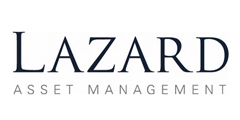

Sponsor introducing: Stephen Scott, Lazard Asset Management
Facilitator: Annie Catchpole, Scorpio Partnership
Key message
Risks come in many shapes and sizes, and it is not easy to categorise clients into defined profiles. A firm’s focus should be on having deeper and more engaging conversations with clients, identifying and reducing the impact of unwanted risks, while being mindful of the types of risks clients are happy to assume.
Headlines
- One of the key risks that wealth management firms face is not meeting client objectives
- A more client-centric approach to understanding risk needs to be used to identify appropriate products for clients
- Wealth firms should consider the types of risk that clients are willing to assume, rather than just the amount of ‘risk’ they are willing to take.
Key themes
Risk is a constant factor in our daily lives and whether consciously or subconsciously, we are always calculating risks. We do this using a four step process: thinking through the potential outcomes, considering the likelihood of each outcome, trying to reduce the undesirable risks involved and proceeding with the appropriate risks. Therefore, we should not seek to avoid risk entirely when investing but to better understand and manage potential risks.
When asked to define the term ‘risk’ in the context of wealth management, delegates used terms such as “probability”, “certainty” and, most crucially, “the chance of clients not meeting their objectives”.
In light of this, communicating with clients about risk is a key area of focus for wealth management firms when constructing their portfolio. It was identified that relationship managers are often preoccupied with the question of “how much risk is the client willing to take” and, as such, investment management agreements contain very little of what the client stipulates.
Currently, the typical approach is to tell the client which investment profile they sit in, to discuss the historical performance of that profile and look at the profile on either side. Many felt that this meant institutions were fitting clients around products rather than tailoring to a client’s risk appetite.
Instead, it was argued that “clients should be more involved in specifying what risks they want to take” – whether that be exposure to specific asset classes, currencies or geographies.
It was also felt that the language used by wealth managers to describe risk should be improved. At the moment, it is difficult to appropriately translate industry rhetoric associated with investment risk to clients. It was noted that using this language can frighten clients away. There is also a danger of over-educating clients, rather than serving them effectively.
Delegates acknowledged the investment risk manager has a fundamental role in helping to counter some of these challenges. Their mandate is to ensure risks do not dominate and that they maintain consistency within the products brief.
This role can be leveraged more by portfolio managers as a source of education on their current risk exposure. The investment manager’s responsibility is to provide guidance with enough scope that portfolio managers feel that they do not have to trade under duress.
Conclusions
- Wealth Managers have a responsibility to appropriately assess a client’s appetite for risk based on their objectives, and advise appropriately.
- More can be done to better identify, appropriately match and communicate risks to clients.

